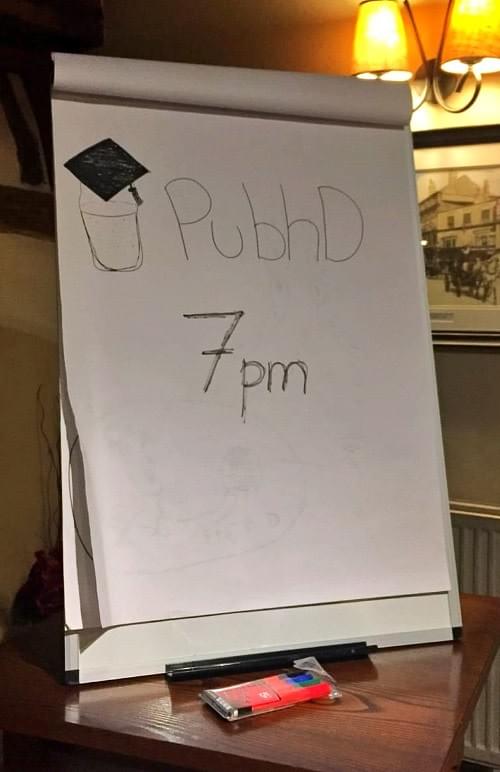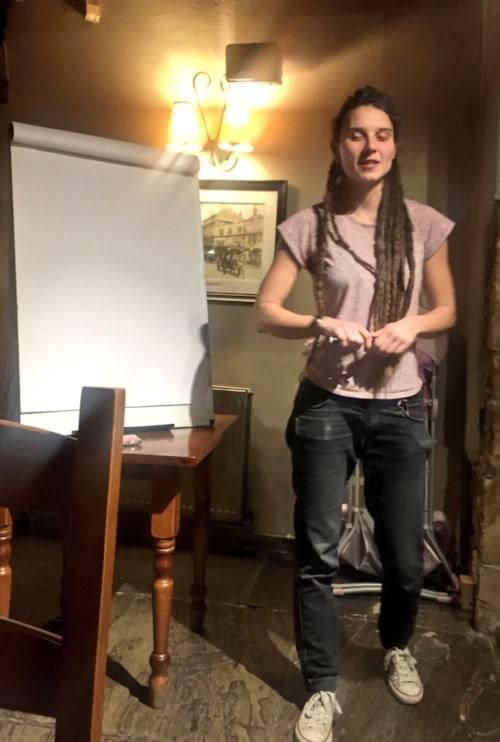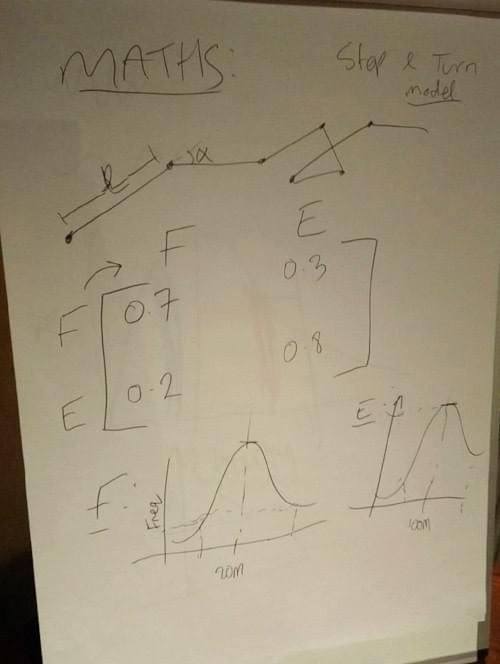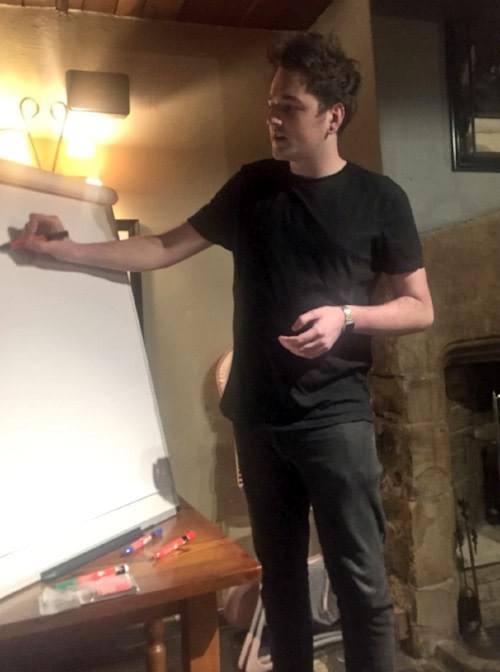Its 2018 and we are finally back with our first event of the New Year! The nights are still cold and frosty, but we had a full audience and some great beers to keep us cosy for the evening - the King Crow stout was a particular favourite for the speakers this week, and we’d definitely recommend it!

Our first speaker was Fay Frost, a first year PhD student in the Maths department at the University of Sheffield. Her research involves making mathematical models to predict animal movements and migration. To explain this, she introduced us to Mr Eriksen, a reindeer farmer in Northern Sweden. He allows his reindeers to roam free, but herds them seasonally, and these animals are the major source of his income. But, what might happen if, for instance, a wind turbine was built in the migration path of these reindeer? Could they be diverted into the territory of predators, or in the direction of fewer resources? Fay is using maths to model the movements of these reindeer, to try and help farmers like Mr Eriksen. She explains that she has actual reindeer migration data, obtained from tracked individuals. This takes the form of GPS location signals, which are received at regular intervals, and can therefore be shown as a series of dots (GPS locations) and lines (paths between these locations). She also explains that in her ‘step & turn’ model, reindeer movements can be described simply as one of two things: foraging, which involves shorter paths and lots of turning, or exploring, which typically sees reindeers take longer paths in a single direction. She uses the probabilities of these events to then create a matrix – essentially a collection of all the probabilities. This data can be entered into a computer, which calculates all the possible outcomes, eventually converging on the likeliest outcome. She can then use statistics to compare her model against actual data, and to keep refining her virtual model until it best fits the real situation. She envisages that with greater computer power and the size of tracking devices getting smaller, this type of modelling will be valuable in studying a range of species, including animals in 3D spaces, such as birds and seals!



Our second speaker of the night was second year PhD student Joel Smith, who is based in the department of Physics & Astronomy at the University of Sheffield. Joel started by discussing how light is composed of photons, which can have a range of energies. This is important to consider when thinking about solar energy. He explained that conducting materials, like metal wires, and semi-conducting materials are typically used to transmit electricity and semiconductors such as silicon can conduct when the electrons are raised to a higher energy state. Silicon is a major material used for the absorption of energy in solar panels. It has an energy ‘band gap’ of 1.1 electron volts – this being the energy needed to promote electrons in the material from the low- to high-energy state, in order to create electricity. This means photons with energy above this value (from sunlight) can be used to create electricity. However, the extra photon energy is lost when the excited electron drops back down the band gap, so it is dissipated and the material cannot utilise it all. Silicon has a lower than ideal band gap energy. He explains that this phenomenon can be explained by the ‘Shockley-Queisser curve’, which demonstrates the maximum theoretical efficiency of a solar cell, depending on the band gap of the material. Joel is currently researching a new material called ‘perovskite’, which has been researched heavily since 2012. This material absorbs photons very well, it can be modified to give a desired band gap, and cost less to produce than silicon. Because it can have a larger bandgap, it can also be layered on top of a silicon solar cell or combined with a second perovskite layer to increase efficiencies. The material is composed of loosely bound organic ions (things like Carbon, Nitrogen, Oxygen) inside an inorganic lattice structure (a metal & halogen). Joel also explains how the manufacture of this material is very easy and low energy, as you essentially mix together chemicals in a solution, which then turns black (starts absorbing light) in front of your eyes - this means it could be scalable, reducing the cost of solar panels and giving increased efficiencies. However, perovskites are currently quite unstable and can react with many things, including oxygen and water! Therefore, Joel and his group are looking into engineering this material to stabilise it for use in solar electronics, with his current research focusing on stabilising the material for UV absorption.


Our final speaker was Miriam Dobson, a second year PhD student from the Biology department at the University of Sheffield. Miriam began by giving us some pretty frank stats: by 2050, it is estimated that 9.5 billion people will live on the planet, with 66% of these living in cities. Also, the UK is dependent on imports from other countries for about 46% of our food. Finally, agriculture is responsible for 24% of our greenhouse gases, and excessive farming is now causing extreme soil erosion, with 24 billion tonnes lost each year – so much so that, from an aerial view, you can see soil draining into the UKs seas after heavy rain! Each of these pressures has prompted Miriam to research into urban agriculture in the UK, and she is questioning whether increased allotment gardening could mean cities are more sustainable in the future. So far she has visited allotments in 10 UK cities, ranging from Southampton to Newcastle. On these visits she is assessing three features: Food (what and how much is being grown), Ecosystem Services (all the benefits obtained from ecosystems, including environmental and community well-being) and Soil (whether the quality here is better than large agricultural farms). She is currently working on the soil aspect, looking at the physical, chemical and biological properties, in comparison to more intensively farmed land. She hopes to expand this research to other cities, and to consider further ideas, such as the mental health impact of maintaining green spaces and the influence of allotment activities on community dynamics.


We would like to thank our speakers again, for engaging us in their research and encouraging plenty of questions from our audience. We look forward to seeing you all again at our next event, on Weds 7th March 2018, which will be an International Women’s Day special.
